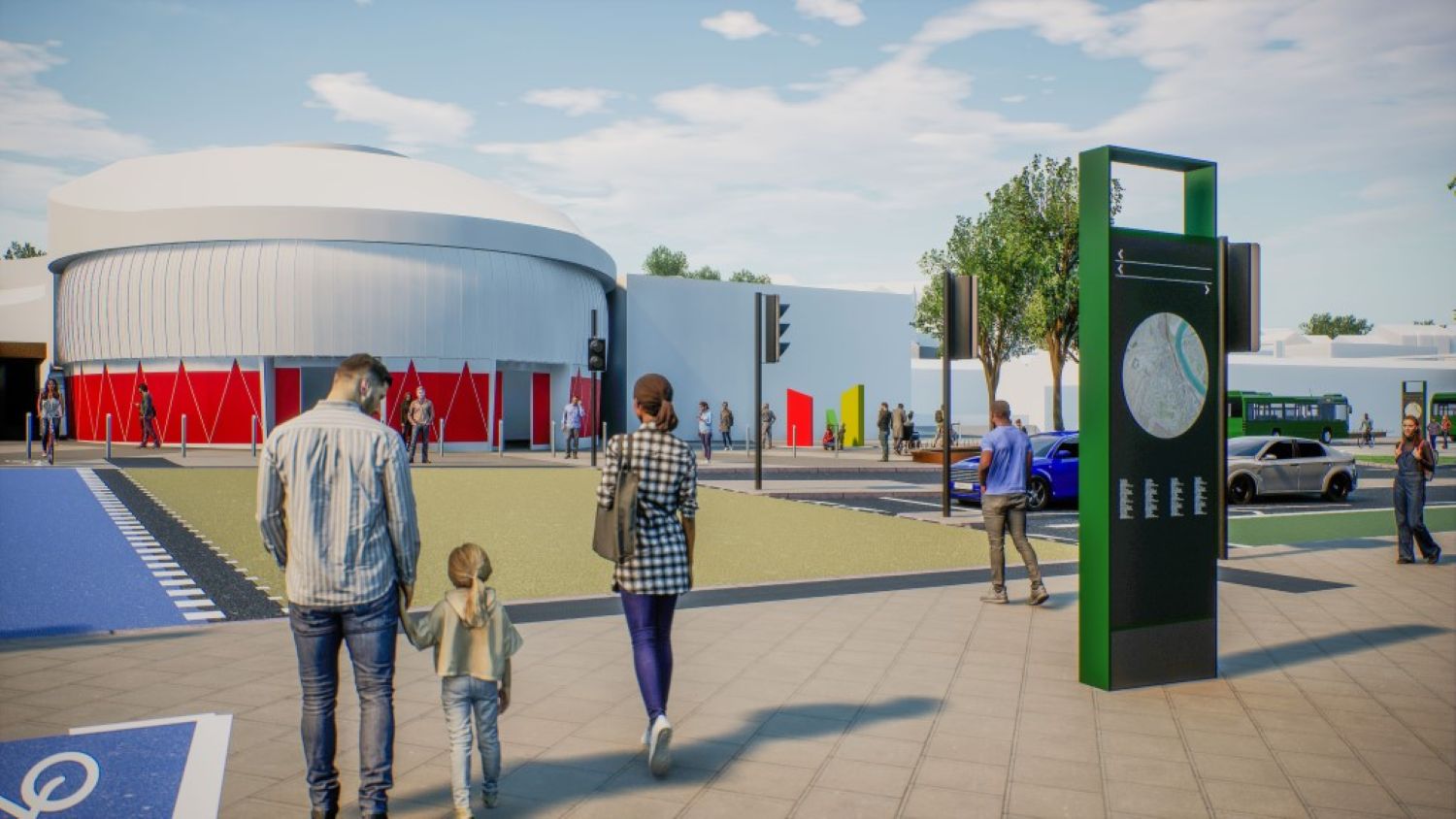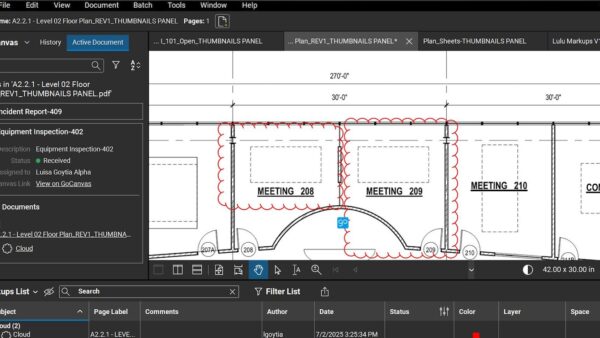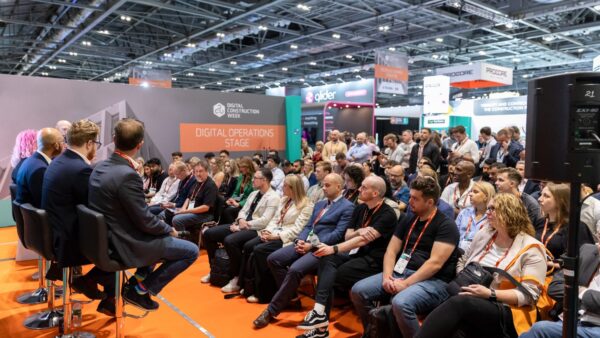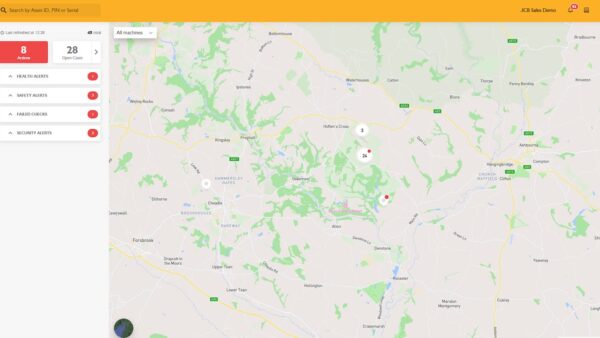Powerful gaming engines that create realistic play environments in Fortnite and Half-Life could have a transformative effect on crowd simulation modelling for construction projects, according to Mott MacDonald technical director Tony Kivistik.
Crowd simulation software has been a gamechanger for designers, enabling them to better understand how people will flow through a new station, airport terminal or sports stadium long before even construction starts. Gamifying this further through software engines normally used to power video games could take the capabilities much further with immersive experiences and realistic graphics.
Instead of crowd simulation modelling just providing insight on levels of service, space utilisation, journey times and queuing at the concept stage, gaming engines allow you to step inside the design.
The realistic visualisation that is possible with gaming engine technology could be key to designers creating the most efficient design, clients understanding what they’re commissioning, and the public seeing exactly what’s planned at the consultation stage. There are also opportunities to use the technology to train staff on evacuation and emergency procedures while construction is still in progress.
While there is huge potential in this latest innovation, the use of game engines by engineering firms is not commonplace – and understanding how game engines work is key to changing that.
Game engines explained
Game engines are a software development environment that might also be referred to as game architecture or game frameworks. They feature settings and configurations that optimise and simplify the development of video games across various programming languages.
In contrast, more conventional crowd simulation software is based on downloads, which are standalone programs. This technology is not capable of high-quality visuals, such as 4K imaging, real-world lighting effects, or immersive virtual or augmented reality viewing and lacks the ability to handle large datasets.
Gaming engines, however, are effectively an all-in-one tool capable of simulating physical movements, sound and 3D rendering, with the ability to handle large datasets.
A key differentiator of game engine technology compared to traditional simulation software used in the engineering industry is real-time rendering. Traditional techniques can take from a couple of minutes to a few days to render a high-quality image, but game engines can render in a fraction of a second, which is fundamental for creating interactive outputs.
This capability is key to enabling users to freely navigate within a 3D environment, including using virtual or augmented reality technology. This opens up new review options compared with the pre-rendered images and flythrough videos delivered by conventional crowd-modelling software.

AI applications
Game engines can also develop simulation logic via compatible machine learning and generative AI applications.
A crowd-flow modelling process could, for example, be enhanced with machine learning and generative AI applications in several ways. In physical and environmental simulations, machine learning models can improve realism in simulations by predicting how objects interact with each other. This leads to more lifelike movement, weather systems and material behaviours.
Machine learning algorithms can also analyse entity actions and conditions within the space, allowing users to respond dynamically. For example, for emergency evacuation strategy planning, users could add multiple variables to simultaneous testing and adaptation in real-time. This could help determine optimum risk prevention or reduction measures.
Other benefits of AI created through gaming engines include the detection of system bugs and being able to optimise crowd behaviour and dynamic routing assignment by simulating thousands of scenarios.
Putting potential into practice
The benefits of post-simulation modelling enhancement that can be achieved using gaming engines have been demonstrated by Mott MacDonald in the last couple of years. The Integrated Design and Engagement Application (IDEA) was developed using Epic Games’ Unreal Engine to simulate crowd movement with a more realistic look and feel than was possible before.
IDEA enables our engineers to view designs from different perspectives, such as how it would be seen from the eyeline of a child compared to a tall adult. The output also allowed the use of virtual reality headsets to give an immersive experience, which is powerful when taking clients on a walkthrough of their project before signing off on the design.
Project stakeholders say they benefited from understanding the designers’ vision of the completed project, after viewing the gamified simulation outputs early in the planning process. All too often, stakeholders don’t have that opportunity and are unable to understand the end product until the project is built and operational.
Using immersive virtual reality outputs also meant that project stakeholders could feel first-hand how busy an area or facility will be when in operation, not just during the design stage. That enabled continuous stakeholder feedback to the design teams throughout the evolution of their projects, thus influencing the design, which would not otherwise have been possible.
Challenges to overcome
Applying the technology is not without its challenges. Getting project teams to understand the technology so that it can be considered as a normal part of project delivery requires knowledge sharing on the capabilities.
Hardware also presents a hurdle – the graphic intensive nature of the gaming engine-based applications requires a high-specification computer, potentially limiting its accessibility. This is a well-known issue though, and new technology, known as pixel streaming, is becoming more cost-effective to apply through a web-based application, effectively removing the hardware barrier challenge.
Despite the potential advantages that game engines bring to crowd modelling, there are currently no commercially available applications delivering it. Nonetheless, the development of IDEA was made possible through Epic’s recent product advancements, external innovation investment, and recruitment of industry specialists to provide increased user and developer support for product applications.
Epic’s investment suggests that change is coming and, once the wider industry starts to understand the benefits of gamifying crowd modelling, this change is likely to be rapid.
Tony Kivistik is technical director at Mott MacDonald.















